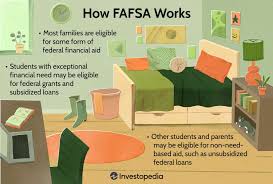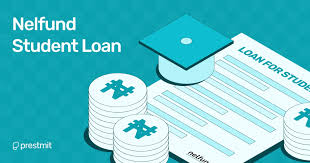Paying for college can be a major challenge, especially with the rising cost of tuition, housing, books, and other expenses. For millions of students, student loans are an essential tool that makes higher education possible. Whether you’re attending a community college, university, or graduate program, student loans help bridge the gap between your financial aid and the total cost of attendance.
The process of applying for student loans can seem overwhelming at first—but it doesn’t have to be. This guide breaks down each step of the student loan application process, from preparing your documents to choosing the right repayment plan. Whether you’re applying for federal loans through the FAFSA or comparing private loan options, understanding the steps involved can save you time, money, and stress.
Before you apply, it’s important to understand the difference between federal and private student loans.
-
Federal student loans are backed by the U.S. Department of Education and typically offer lower interest rates, more flexible repayment options, and borrower protections like loan forgiveness or income-driven repayment plans.
-
Private student loans, on the other hand, are issued by banks, credit unions, and online lenders. They often require a credit check and may have higher interest rates and fewer repayment benefits.

Understand the Types of Student Loans
Before applying for any loan, it’s crucial to understand the different types of student loans available. Each loan type has its own eligibility requirements, interest rates, repayment terms, and borrower protections. Knowing the difference can help you choose the best option for your financial situation.
a. Federal Student Loans
Federal student loans are funded by the U.S. government and are generally the first option students should consider. They typically offer lower interest rates, more flexible repayment plans, and protections such as deferment, forbearance, and forgiveness options.
Here are the main types of federal student loans:
-
Direct Subsidized Loans
Available to undergraduate students with demonstrated financial need. The government pays the interest while you’re in school at least half-time, during the grace period, and during any deferment periods. -
Direct Unsubsidized Loans
Available to both undergraduate and graduate students, regardless of financial need. Interest begins accruing from the moment the loan is disbursed, and you’re responsible for paying all of it. -
Direct PLUS Loans (Parent and Graduate PLUS)
These loans are available to graduate or professional students and parents of dependent undergraduate students. A credit check is required, and they typically have higher interest rates than subsidized or unsubsidized loans. -
Direct Consolidation Loans
Allow you to combine multiple federal loans into a single loan with one monthly payment. This can simplify repayment and may give you access to additional repayment or forgiveness programs.
How to Apply for Student Loans: A Step-by-Step Guide for College Students
b. Private Student Loans
Private student loans are offered by non-government lenders such as banks, credit unions, and online financial institutions. These loans can be used to cover costs not covered by federal aid.
-
Credit-based approval: Approval for private loans depends on your credit history, income, or that of a cosigner (if you have limited credit).
-
Variable or fixed interest rates: Rates are often higher than federal loans and may fluctuate over time if variable.
-
Less borrower protection: Most private loans do not offer income-driven repayment plans, deferment, or forgiveness options.
Private loans should generally be considered only after all federal aid options have been explored and exhausted.
Determine How Much You Need to Borrow
Before you apply for student loans, it’s important to calculate how much you truly need to borrow. Taking out more than necessary can lead to excessive debt, while borrowing too little could leave you struggling to cover essential college expenses.
-
Estimate your total Cost of Attendance (COA)
Start by calculating your full cost of attendance, which includes tuition, fees, room and board, books, supplies, transportation, and personal expenses. Most schools list this information on their financial aid or admissions pages. -
Subtract grants, scholarships, and work-study
Next, reduce your COA by subtracting any “free money” you’ve received—such as grants and scholarships—as well as any expected income from work-study or part-time jobs. -
Only borrow what you truly need
It can be tempting to borrow the full amount offered, but you’ll have to repay every dollar—plus interest. Borrowing less now can save you thousands over the life of your loan.
Use online student loan calculators to help determine a borrowing amount that covers your needs without overextending your future finances.
Check Eligibility Requirements
Before applying for student loans, you’ll need to make sure you meet the eligibility criteria. These requirements vary depending on whether you’re applying for federal or private loans.
Federal Student Loan Requirements:
-
U.S. citizenship or eligible non-citizen status
You must be a U.S. citizen, U.S. national, or permanent resident. Some non-citizens with eligible immigration status may also qualify. -
Enrollment in an accredited school at least half-time
Federal student loans are only available if you’re enrolled in a degree or eligible certificate program at a qualifying institution. -
Satisfactory academic progress
You must maintain a minimum GPA and complete a percentage of attempted coursework as defined by your school.
Private Student Loan Requirements:
-
Good credit history (or a creditworthy cosigner)
Most private lenders require a strong credit score and proof of income. If you don’t qualify on your own, you may need a cosigner—usually a parent or relative.
Each loan type may have slightly different eligibility rules, so always review specific requirements with your lender or financial aid office before applying.

How to Apply for Federal Student Loans
Applying for federal student loans is a multi-step process that begins with completing the Free Application for Federal Student Aid (FAFSA). Follow these steps to ensure a smooth application process and access the financial support you need for college.
a. Step 1: Create an FSA ID
Your FSA ID is a username and password that gives you access to federal student aid websites and serves as your legal signature.
-
Why you need it: You’ll use your FSA ID to complete the FAFSA, sign your Master Promissory Note, and manage your student loans.
-
How to create it: Visit studentaid.gov/fsa-id, provide your personal information, and verify your email and phone number.
Tip: Save your FSA ID in a secure place—you’ll need it every year.
b. Step 2: Complete the FAFSA
The Free Application for Federal Student Aid (FAFSA) determines your eligibility for federal loans, grants, and work-study.
-
What you’ll need:
-
Social Security Number
-
Tax returns and income information
-
List of schools you plan to apply to
-
Dependency status and parent information (if applicable)
-
-
When to apply: The FAFSA opens every year on October 1. Apply as early as possible—many aid programs have limited funds.
-
Where to apply: Submit your FAFSA online at fafsa.gov or studentaid.gov.
c. Step 3: Review Your Student Aid Report (SAR)
After submitting the FAFSA, you’ll receive a Student Aid Report (SAR) summarizing the information you provided.
-
Check for errors: Make sure your personal and financial details are correct. You can log in and make corrections if needed.
-
Understand your EFC: The Expected Family Contribution (EFC) is a number used by schools to calculate how much aid you’re eligible to receive.
d. Step 4: Receive Financial Aid Offer from Your School
Your selected schools will use your FAFSA information to send you a financial aid award letter.
-
What’s included:
-
Federal student loan eligibility
-
Pell Grants and other federal aid
-
Work-study opportunities
-
-
How to compare offers: Look at the total aid package vs. your cost of attendance to decide which school is the most affordable.
e. Step 5: Accept Your Student Loans
Once you receive your aid offer, you’ll need to accept or decline the financial aid offered.
-
Borrow wisely: Accept grants and work-study first, then subsidized loans, and lastly, unsubsidized loans. Decline any aid you don’t need.
-
Log in to your school’s financial aid portal to manage your award.
f. Step 6: Complete Loan Entrance Counseling
If you’re a first-time federal student loan borrower, you must complete entrance counseling.
-
What it covers:
-
Loan terms and conditions
-
Interest rates and repayment options
-
Your rights and responsibilities
-
-
Where to complete it: Do it online at studentaid.gov.
g. Step 7: Sign the Master Promissory Note (MPN)
The Master Promissory Note (MPN) is your legal agreement to repay your loan.
-
What it is: A binding contract outlining your loan terms, interest rate, repayment expectations, and legal obligations.
-
When to sign: Only once per loan type (e.g., Subsidized/Unsubsidized or PLUS). Sign it at studentaid.gov.

How to Apply for Student Loans: A Step-by-Step Guide for College Students
Tips to Improve Your Student Loan Application Success
Whether you’re applying for federal or private student loans, taking the right steps early can increase your chances of getting approved and receiving better loan terms. Here are key tips to help you succeed in the student loan application process:
Apply early for the best aid packages
Many federal and state aid programs have limited funding and are awarded on a first-come, first-served basis. Submitting your FAFSA as soon as it opens (usually October 1) ensures you’re considered for the maximum amount of aid available.
For private loans, applying early gives you more time to compare lenders, address any credit issues, and avoid delays in tuition payments.
Maintain accurate financial and academic records
Having clean, organized documentation can prevent errors and speed up the application process. Be ready to provide:
-
Accurate income and tax information
-
Proof of enrollment and academic progress
-
Up-to-date contact information
Errors or missing data on your FAFSA or loan application can cause delays or even result in denial of aid.
Explore all federal aid before choosing private loans
Federal student loans should always be your first option due to their low fixed interest rates, flexible repayment plans, and potential forgiveness programs.
Only turn to private loans if you’ve maxed out your federal aid, and be sure to borrow only what you need. Prioritize subsidized loans when available, as they save you money on interest during school.
Use a cosigner if needed for private loans
If you don’t have a strong credit history, applying with a creditworthy cosigner can improve your chances of getting approved for a private loan—and help you secure a lower interest rate.
Make sure your cosigner understands their responsibilities, as they are equally responsible for loan repayment if you can’t pay.
Mistakes to Avoid When Applying for Student Loans
Even small missteps in the student loan process can lead to missed aid opportunities or long-term financial strain. Here are the most common mistakes to avoid when applying for student loans:
Missing FAFSA deadlines
One of the biggest errors is waiting too long to submit the Free Application for Federal Student Aid (FAFSA). Some federal, state, and institutional aid is limited and awarded on a first-come, first-served basis.
✅ Tip: Mark your calendar and apply as early as possible after October 1 each year.
Borrowing more than you need
It’s easy to accept the full loan amount offered, but borrowing more than necessary can lead to overwhelming debt after graduation.
✅ Tip: Create a budget based on your actual college costs and only borrow what’s essential.
Ignoring interest rates and repayment terms
Not all loans are the same. Interest rates, grace periods, and repayment options vary between federal and private loans.
✅ Tip: Always compare rates and understand what your monthly payments will look like after graduation.
Failing to compare private lenders
If you need a private student loan, don’t apply with the first lender you find. Rates, fees, and benefits can differ significantly.
✅ Tip: Use student loan marketplaces or comparison tools to shop for the best terms and lowest interest rates.
Avoiding these mistakes can lead to smarter borrowing decisions—and a much smoother financial future.
After Applying: What’s Next?
Once your application is submitted, there are a few important steps to take to stay on top of your student loan responsibilities.
Monitor your loan status
Log in to your Federal Student Aid account or your private lender’s portal to track the status of your loan.
Watch for any updates, approval notifications, and disbursement schedules.
Stay in contact with your loan servicer
Your loan servicer is the company responsible for managing your loan once it’s disbursed. They’ll send billing statements, track your repayment progress, and assist with deferment or income-driven repayment options.
✅ Keep your contact info updated so you don’t miss important messages.
Plan ahead for repayment and interest accrual
Start thinking about how and when you’ll repay your loan—even if you’re still in school.
-
Make interest-only payments if possible
-
Set up a student loan tracking spreadsheet or use a loan management app
-
Explore loan forgiveness or repayment assistance programs if eligible
Taking these proactive steps will help you stay organized, avoid missed payments, and feel more confident managing your student loan journey.
FAQs (Optimized for Featured Snippets)
These frequently asked questions address common concerns from students applying for loans and are written to target Google Featured Snippets for enhanced SEO visibility.
Can I apply for student loans without my parents?
Yes, you can apply for federal student loans without your parents’ financial information if you qualify as an independent student under FAFSA guidelines. However, if you’re considered a dependent student, your parents’ financial details are required—even if they don’t plan to help pay for college.
What is the deadline to apply for student loans?
For federal student loans, the FAFSA opens on October 1 each year and closes June 30 of the following year. However, individual state and college deadlines may be much earlier. Private loan deadlines vary by lender but should be completed well before tuition is due.
How long does it take to get approved for a student loan?
-
Federal loans: Approval is based on FAFSA processing, which may take a few days to a few weeks, depending on timing and school review.
-
Private loans: Some lenders offer instant pre-approval, but full approval may take 1–3 weeks, especially if a cosigner is involved.
Can I apply for student loans mid-semester?
Yes, you can apply for both federal and private student loans mid-semester, as long as you’re enrolled and your school is still certifying loans for the term. Just be mindful of financial aid deadlines and tuition payment schedules.
Conclusion
Applying for student loans may seem complicated at first, but with the right steps and resources, it’s a manageable and essential part of funding your education.
Start by understanding your loan options, submitting your FAFSA early, and comparing private lenders if needed. Always borrow only what you need, and keep track of your responsibilities as a borrower.
Remember: federal loans offer more protections and flexibility than private ones, so exhaust those options first. When in doubt, seek personalized advice from your school’s financial aid office—they’re there to help you make informed and responsible borrowing decisions.
Your future starts with smart planning today—and that includes how you pay for college.
